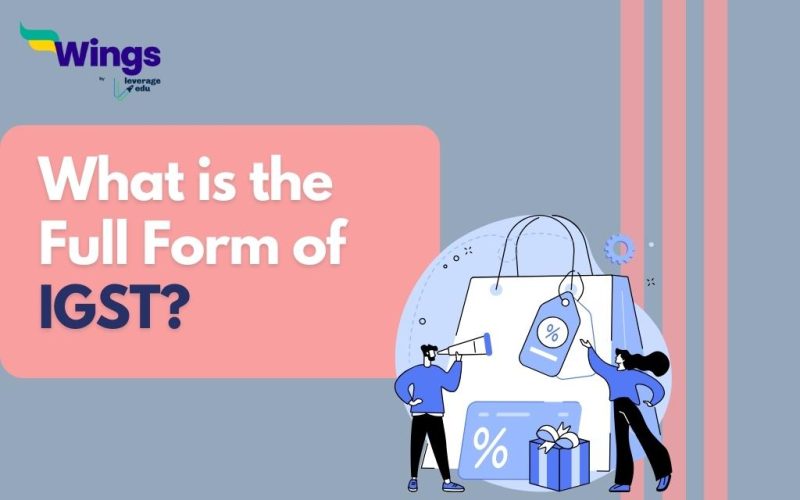The Full Form of IGST is Integrated Goods and Service Tax. IGST was introduced on the 1st of July, 2017 under the IGST Act, and IGST is one of the four types of GSTs. It is a type of tax levied in India on the supply of goods and services across state borders. Furthermore, in a transaction that involves the movement of goods or services from one state to another or from the Union Territory to a state, IGST is charged. Unlike Central GST (CGST) and State GST (SGST) which are levied by the central and state governments, respectively, IGST is administered by the central government.
Also Read: What is the Full Form of TAX?
What are the Features of IGST?
Table of Contents [show]
The characteristics of IGST are as follows:
- Preventing Tax Cascading: IGST prevents tax cascading by consolidating Central GST (CGST) and State GST (SGST) thus ensuring a unified tax structure.
- Unified National Market: IGST contributes to the creation of a unified national market by simplifying the tax structure for inter-state transactions.
- Calculation Basis: IGST is calculated based on the value of the transaction thus providing a clear and standardized method for tax assessment.
- Revenue Sharing: The revenue generated from IGST is shared between the central and state governments further fostering cooperative federalism.
- Harmonized Indirect Tax Structure: IGST plays a pivotal role in creating a simplified and harmonized indirect tax structure in India.
- Promoting Economic Integration: IGST promotes economic integration and ease of doing business across the country.
Also Read: What is the Full Form of ITR?
Is IGST Payable on Import?
All inter-state supplies attract IGST. Thus, the import of goods and services into India will come under IGST. Moreover, all basic customs duties and all applicable customs levies will be charged. IGST on the import of goods will be levied and collected under the Customs Act, of 1962. The import declarations will also be filed with the customs authorities.
Key Points about GST
- Types: CGST (Central), SGST (State), IGST (Integrated).
- Rates: Vary from 5% to 28%.
- Input Tax Credit: Businesses can claim ITC.
- E-Way Bill: Required for interstate movement of goods worth more than ₹50,000.
- GST Return: Businesses need to file returns periodically.
Understanding GST with Example
GST, or Goods and Services Tax, is a tax levied on most goods and services in India. Here are some key points:
- Types: CGST (Central), SGST (State), IGST (Integrated).
- Rates: Vary from 5% to 28%.
- Input Tax Credit: Businesses can claim ITC.
- E-Way Bill: Required for interstate movement of goods above a certain threshold.
- GST Return: Businesses need to file returns periodically.
Example:
- MRP of a mobile phone: ₹15,000
- GST Rate: 18%
- Total Price: ₹17,700
Remember: GST is a complex tax. Consult a tax professional for specific calculations and advice.
GST Full Form in Chat
GST full form in chat can be Good night, Sweet, Take care as said by the people on Twitter when the GST came into existence. This full form of GST is just invented by some of the users on social media to have some fun.
GST Full Form in Medical
GSTs are enzymes that help detoxify harmful substances. Genetic mutations can affect their function. A lab test can identify these mutations and help manage your health.
Also Read: What is the Full Form of VAT?
Popular Full Forms
We hope this blog has helped you understand the full form of IGST and everything related to it. If you want to know more, find the 300+ full forms list on our blog. In the world of short forms, you can rely on the Leverage edu page to know about more full forms like this! Connect with us study abroad experts to achieve your international dream today!
 One app for all your study abroad needs
One app for all your study abroad needs















 45,000+ students trusted us with their dreams. Take the first step today!
45,000+ students trusted us with their dreams. Take the first step today!
